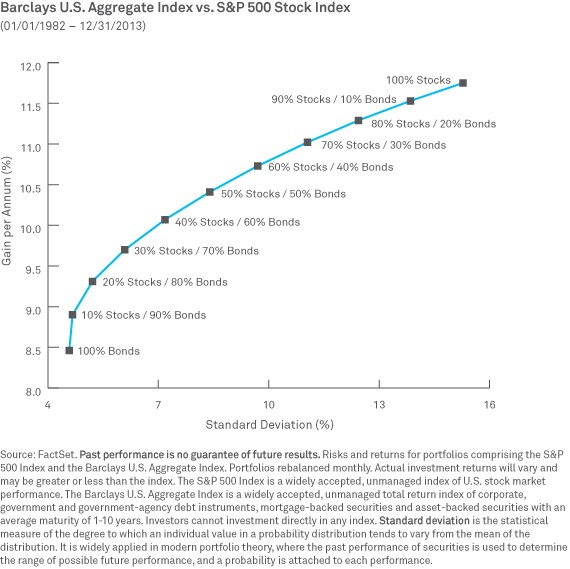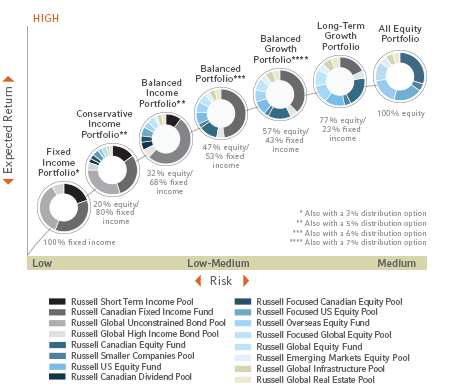Rebalance Your Investment Portfolio to Stay On Track
Post on: 15 Июнь, 2015 No Comment

One of the basics of investing is the use of asset allocation in your strategy. Asset allocation, or the way your portfolio is built, matters a great deal to the long-term success of your investment strategy. Asset allocation, however, isnt just about setting it and forgetting it. As you add more shares to your portfolio, and build up various components, its easy for things to get a little off track. This can even happen when you have your investments set up automatically, and you use dollar cost averaging to help you build your portfolio.
Over time, the way that your portfolio is built can impact your asset allocation. As some assets perform better than other assets, they can start to take over your portfolio. When this happens, things can get a little off kilter. In order to remedy the situation, and keep on track with your investing strategy. you need to rebalance your portfolio.
What are Your Investing Goals?
As you prepare to rebalance your investment portfolio, you need to review your investing goals. What do you want to accomplish if your asset allocation is 40-40-20 in three different asset classes? Reminding yourself of your ultimate investing goals can help you bring things back into balance. This is especially important if recent shifts have resulted in a new allocation of 60-30-10. No youre off your desired allocation, and your portfolios overall performance might be impacted down the line.
Another reason to rebalance is if your goals have changed for some reason. Are you moving closer to a life milestone, with its shifting requirements? If your goals are different, then you might need to change which asset classes are emphasized in your investment portfolio. This is another reason to rebalance. You dont want the old portfolio that is aimed at helping you achieve goals that you no longer have.
As you rebalance, you will also likely be able to take advantage of the ability to sell high. This is especially true if your rebalancing has been prompted by one asset class outperforming the others in your portfolio. You can sell some of your outperforming assets, and use the profits to buy more of the underperforming assets at a discount. Regular portfolio rebalancing can help you periodically take advantage of market conditions while making sure that you are still on track to meet your investment goals.
An Example
Sometimes it helps to have a tool that can give you some guidance. Below is a screenshot from Personal Capital (a free online tool that tracks your accounts, similar to Mint.com, but it goes a step further by helping you analyze and plan your investments). This graphic shows the typical asset classes: cash, bonds, stocks, and alternative investments (e.g. real estate, commodities, etc.). As you can see, the current portfolio is overweight in stocks (+4.4% international stocks and +1.1% US stocks) and doesnt have enough alternative investments (-7.4%).
To bring this portfolio back to target, you could sell some stocks and use that money to buy alternative investments (there are many ETFs that would make this an easy thing to do).
How Often Should You Rebalance?

Its important not to get too caught up in rebalancing, though. You dont want to be changing up your portfolio every month. You can decide how to rebalance, based on your own personal style and your goals for financial freedom. Many people choose to rebalance twice a year, and others prefer to rebalance three times a year, or do it quarterly. Rebalancing starts to lose some of its usefulness if you decide to rebalance more than four times a year.
Another method of deciding when to balance is to consider your asset allocation. If your asset allocation gets off base by more than 5%, it might worth it to consider rebalancing to bring everything back in line. Others prefer to wait until the asset allocation is off by 10%. What you decide on depends on how often you check your portfolio, and the impact you think current market and economic conditions will have on your investments.
At the very least, consider rebalancing once or twice a year. Youll keep on track, and it makes a good excuse to evaluate your investments, and to ensure that your investment goals havent changed.
Watch Out for Fees
Remember that rebalancing could very well come with fees. Anytime you sell and buy assets, you could be subject to transaction fees. One of the reasons that many experts recommend that you avoid compulsively checking your investments, and rebalancing too often, is that you could erode your real returns through the payment of fees. You dont want to reduce your returns because of high fees, so be measured in your approach to rebalancing.














